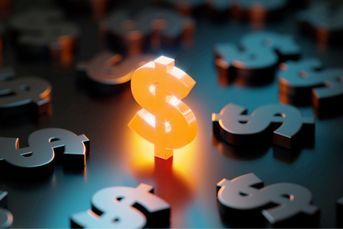When analysts say ‘sell,’ it is time to buy, data show
Stocks unpopular with Wall Street up 165% since March 2009
Following the advice of equity analysts may be perilous to your profits.
Although companies in the S&P 500 that analysts loved the most saw their stocks rise 73% on average since the benchmark for U.S. equity started to recover in March 2009, those with the fewest “buy” recommendations gained 165%, according to data compiled by Bloomberg.
Don Wordell, a fund manager at RidgeWorth Capital Management Inc., said that equities that Wall Street firms rate lowest are more likely to beat the market.
“When you have a stock that has 15 analysts covering it and it has 15 “buys,’ I can’t imagine it has much outperformance left,” said Mr. Wordell, whose $1.64 billion RidgeWorth Mid-Cap Value Equity Fund topped 98% of its peers over the past five years. “You’ve got a stock that has 15 “sells’ on it, you’re set up there to have some strong outperformance.”
Investors who look at analysts as a contrary indicator are buying shares of utilities, which pay the highest dividends after telephone stocks, and banks, whose earnings are likely to grow three times as fast as the S&P 500 this year.
The index completed the sixth straight weekly advance Jan. 7. It had gained 88% to 1,271.50 since March 9, 2009, Bloomberg data show.
NETFLIX A BLOCKBUSTER
The benchmark index for American stocks rallied 13% last year. Consumer shares led the advance, with Netflix Inc. (NFLX) posting the biggest gain on the S&P 500 (219%), along with shares of industrial companies such as Cummins Inc. (CMI), the engine maker, which advanced 140%.
Analysts said that health care and technology companies would win last year.
Instead, they had two of the three smallest rallies among 10 industries in the S&P 500, gaining less than 10%. The stocks that analysts liked least, banks and real estate firms, rose 19% and 28%, respectively.
S&P 500 companies with the most “buy” ratings gained 8.7% last year, while the ones with the fewest jumped 20%, the data show.
Bloomberg assigns each analyst rating a number ranging from 1 for “sell,” to 5 for “buy.”
For this article, stocks with at least five ratings as of Dec. 31 were divided into three groups by average rating. Only rankings from analysts who still cover the companies were counted.
‘SCRATCH YOUR HEAD’
The Federal Reserve’s unprecedented stimulus, including a program to buy $600 billion in bonds to lower unemployment and boost growth, spurred stocks whose earnings are most tied to the economy, such as iron producer Cliffs Natural Resources Inc. (CLF), which gained 69%. Earnings for S&P 500 companies rose 32% last year, analysts estimate, the fastest growth since 1994.
Tony Butler, a pharmaceutical analyst for Barclays PLC, told clients to buy Pfizer Inc. (PFE) and Merck & Co. (MRK). Shares of Pfizer, the largest U.S. drugmaker, slipped 3.7% last year, while No. 2 Merck’s stock lost 1.4%.
“You scratch your head and wonder, “Which part of this am I missing that the market is getting right?’” Mr. Butler said. His picks generated a 13% return over the past year, beating the average 8.9% gain from analysts who follow the industry, according to data compiled by Bloomberg.
WHIFFED ON HEALTH CARE
Analysts recommended health care stocks on speculation that the government would fail to pass legislation overhauling the industry, according to Mr. Butler. President Barack Obama signed his health care policy into law March 23, imposing fees on drug makers and mandating insurance coverage.
Banks have been among the lowest-rated stocks in the S&P 500 even as their shares gained 172% since the rally began in March 2009. Sixteen lenders in the index may report average earnings growth of 44% this year as business recovers from the worst financial crisis since the Great Depression, forecasts compiled by Bloomberg show.
An improving economy and fewer write-offs for bad loans led to a surge in regional-bank stocks last year, said Kevin St. Pierre, an analyst at Sanford C. Bernstein & Co. Inc.
He recommended shares of Zions Bancorporation (ZION), a lender whose shares jumped 89% in 2010. The company started last year as the eighth-lowest-rated stock in the S&P 500.
BIG RISE FOR SMALLER BANKS
“Throughout most of “09 and early 2010, it was very easy and safe to be negative on the financials,” Mr. St. Pierre said.
“Many analysts in different sectors said, “I’m not going to catch these falling knives.’ Knives were falling all over the place at the end of “09,” he said.
Following Mr. St. Pierre’s recommendations last year would have generated a return of 17%, exceeding the 1% average increase from analysts following the industry, data compiled by Bloomberg show.
Analysts couldn’t foresee that changes to financial regulations would threaten profits at larger lenders, driving investors to smaller ones, said David A. George, a bank analyst at Robert W. Baird & Co. Inc.
“A year ago today, financial regulatory reform was not even on people’s radar,” said Mr. George, ranked fourth by returns among 34 analysts who cover Wells Fargo & Co. (WFC), according to data compiled by Bloomberg.
“Going into 2010, a lot of investors were positioned in big banks,” he said. “With the increased political and regulatory scrutiny, you saw money come out of those names and into the regionals.”
At the end of 2009, Mr. George had “neutral” ratings on KeyCorp (KEY), Marshall & Illsley Corp. (MI), M&T Bank Corp. (MTB), SunTrust Banks Inc. (STI) and Zions. Each gained at least 26% last year.
EXPENSIVE ENERGY
Analysts are also bearish this year on S&P 500 utilities, which offer a collective dividend yield of 4.32%, according to data compiled by Bloomberg.
That is more than twice the 1.86% yield of the S&P 500. Only telephone companies, at 5.17%, pay more.
Merchant generators, which sell power in wholesale markets, will be hurt by falling natural gas prices, while traditional regulated utilities are expensive relative to forecast profit, said Michael S. Worms, a utilities analyst at Bank of Montreal. Southern Co. (SO), the largest U.S. electricity producer by market value, trades for 16 times estimated 2011 earnings, compared with 13.4 for the S&P 500.
‘ALMOST FAIRLY VALUED’
“The bottom line is, gas prices are down and they will hurt the merchants,” said Mr. Worms, who has a “market perform” rating on 25 of the 29 companies that he covers. “On the regulated side, I guess you can say they are almost fairly valued.”
Darden Restaurants Inc. (DRI) and Priceline.com Inc. (PCLN) are among the S&P 500 companies that analysts favor most, helping give so-called consumer discretionary stocks the second-highest average rating among 10 industries in the index, behind health care. The stocks rallied as the economy gained momentum; U.S. retailers reported higher-than-estimated sales in November.
The measure of 79 stocks including hotel operators and restaurant owners rallied 26% last year, exceeding gains from the index’s nine other main industries. The group now is valued at 1.1 times sales, the highest since 2000, according to data compiled by Bloomberg.
“Our main reason for optimism is that the economy has gained its footing, and spending is picking up on the corporate side,” said Matt Arnold, an analyst at Edward Jones, who has 10 “buy” ratings and six “holds” on consumer companies. “That could yield some improvement on the employment front and in consumer spending, which will find its way down to retailers.”
UNEMPLOYMENT RATE
Spending is unlikely to bounce back enough to help the stocks, given that the unemployment rate is within 0.7 percentage points of the 26-year high set in October 2009, said Paul Lejuez, an analyst at Nomura Holdings Inc.
U.S. payrolls increased 103,000 in December, Labor Department figures showed.
By comparison, the median forecast in a Bloomberg survey of economists was 150,000. The jobless rate fell to 9.4%, partly reflecting a shrinking work force.
“With unemployment where it is, we are not out of the woods,” said Mr. Lejuez, who has 11 “neutral” or “reduce” ratings out of 18 stocks and downgraded Gap Inc. (GPS) to “neutral,” from “buy,” Jan. 7. “There’s too much complacency out there in terms of people assuming everything is great.”
Shares of Priceline, the second-largest online travel agency, is trading at 46 times reported profit, the most expensive level since 2004. The stock gained 83% last year.
Analysts’ estimates show that Darden, owner of the Olive Garden restaurant chain, will increase profit, excluding some items, by 13% this year, compared with the S&P 500’s projected growth of 14%.
“The problem with stocks that are loved by everyone is that there’s no one left to buy them,” said Paul Zemsky, head of asset allocation for ING Investment Management, which oversees $550 billion. “It’s hard to make money if you’re in the consensus.”
Learn more about reprints and licensing for this article.








